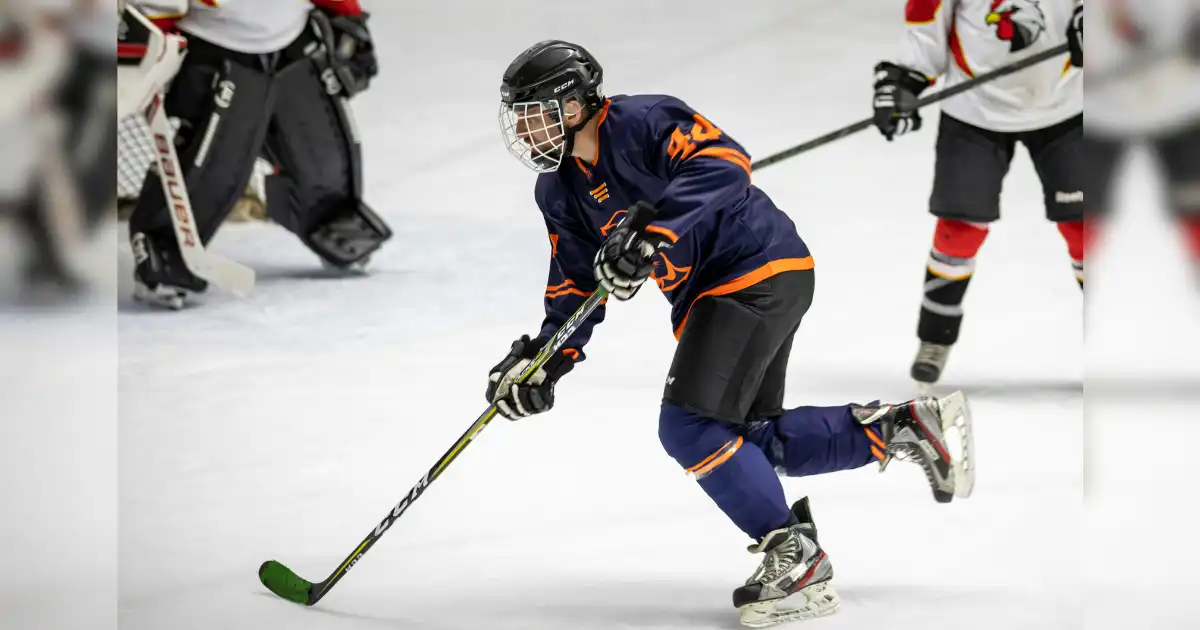In the fast-paced world of hockey, puck control separates solid players from the elite. It’s the foundation of every great pass, shot, and dangle. But while most players focus on stick flex and blade curve, one crucial element often gets overlooked—the blade lie.
If you’ve ever felt inconsistent during stickhandling or like your passes weren’t crisp, your blade lie might be the missing piece. Fine-tuning this element of your gear can lead to tighter control, quicker reactions, and a more natural connection between you and the puck.
What Is Blade Lie?
Blade lie refers to the angle between your stick shaft and the blade itself. It determines how your blade sits on the ice during play. Lie numbers usually range from 4 to 7, with each number representing a different angle:
• Lower lie numbers mean the blade lies flatter on the ice—ideal for low stances.
• Higher lie numbers have a more upright angle—better suited for players with more vertical positioning.
The goal is simple: ensure the maximum portion of the blade makes contact with the ice when you’re in your normal skating and puck-handling posture.
Why Blade Lie Affects Puck Control
Every movement on the ice—passes, dekes, quick stops—relies on how well your blade contacts the puck. If your stick’s lie is too high or too low for your stance, the blade might only touch at the heel or toe, throwing off your puck control.
A poorly matched lie leads to issues like:
• Rolling pucks during stickhandling
• Inconsistent passes
• Shots with less accuracy
• Difficulty corralling pucks in tight spots
In contrast, the right blade lie allows smoother motion and reliable feel every time you touch the puck.
Find the Right Lie for Better Puck Control
Start by evaluating your natural posture when skating or handling the puck. If you tend to play with a deeper knee bend and lower hands, you’ll likely benefit from a lower lie (e.g., Lie 5). More upright players typically match better with a higher lie (e.g., Lie 6 or 7).
A quick way to test it: tape your blade, play a session, and then check the wear pattern. If you see wear concentrated on the toe or heel, your blade lie needs adjustment. The goal is even tape wear from heel to toe—that’s your sweet spot for puck control.
Stick Length Impacts Lie—and Control
Blade lie doesn’t exist in isolation. Cutting your stick shorter effectively increases the lie, while adding length reduces it. That means a stick that once fit you perfectly might become less effective after a small trim.
Stick length and lie work together. A change in one will influence the other. To maintain puck control, make sure any changes to your stick’s length don’t throw off your blade positioning.
Maximize Your Puck Control with Blade Lie
Once you’ve found the right lie, the benefits show up quickly. With more blade surface in contact with the ice, you gain:
• More responsive stickhandling
• Improved accuracy on passes and shots
• Better puck retention in battles
• Cleaner transitions from forehand to backhand
Defensemen can keep pucks in at the blue line with more confidence, and forwards can execute toe drags and tight moves without losing the puck.
Control isn’t just about talent—it’s about putting yourself in the best position to succeed every time you touch the puck.
Practice Smart, Play Sharp
Improving puck control doesn’t stop with a new stick setup. Once you’ve matched your blade lie to your posture and stick length, hit the ice with intent. Focus on drills that challenge your coordination and timing:
• Obstacle stickhandling with cones or pucks
• Quick touches in tight spaces
• Pass-and-receive routines with a partner or rebounder
• Puck protection drills in corners or along the boards
You’ll notice more confidence, better decision-making, and smoother movement. And it all starts with having your gear aligned properly.
Final Thoughts
Puck control is one of the most important skills in hockey—and blade lie is one of the most important factors affecting it. Finding your ideal lie gives you more confidence, smoother touches, and faster decisions on the ice.
Take the time to assess your posture, evaluate your stick’s performance, and make the adjustments needed. Your puck control will thank you.
#PuckControl #HockeyStickTips #BladeLie #AllBlackhockeySticks #StickHandling #HockeyGear #OnIceConfidence #CustomHockeySticks

